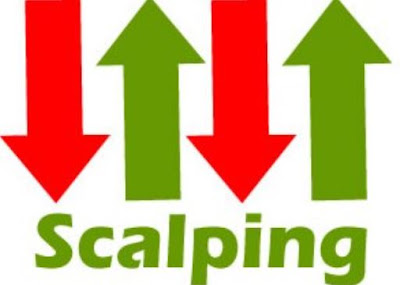IS TIME FRAME ANALYSIS SUITABLE FOR SCALPERS?
Time Frame analysis means doing a comparison on several Time Frames to get a clear picture of the direction of the current price movement. The main purpose of Time Frame analysis is to find out the direction of the dominant trend before entry.
Analysis by comparing Time Frame trading, or multiple time
frame analysis, needs to be done by traders before entry, especially for
traders using scalping techniques who always play with low time frames. For
scalping techniques that prioritize speed, forex traders do not have to observe
many time frames, but only two trading charts, namely the reference chart and
the execution chart.
Scalping technique with Time Frame analysis is suitable for trading in high volatility markets with limited trading time, such as stock price indexes. This article exemplifies Time Frame analysis for Scalping on the UK-100 stock index, where traders generally use a 5 minute Time Frame for position execution. In practice, this method can also be used on the Dow Jones (USA30), Hangseng (HKO43), Nikkei (JPN225) and others. The Time Frame for Scalping on the reference chart must be higher than the execution chart. There is a (non-standard) rule that dictates that the reference chart should be 6 times the Execution Time Frame chart. For traders who usually use a 5-minute Time Frame on the execution chart, the reference chart's Time Frame is generally 30 minutes or 1 hour.
The rules in the Time Frame analysis method for Scalping are:
- If the price moves above the EMA-200 line on the reference chart, and the price on the execution chart
- also moves above the EMA-200 line, the trader can open long positions.
(image ema 200)
- If the price moves below the EMA-200 line on the reference chart, and the price on the execution chart
- also moves below the EMA-200 line, the trader can open short positions.
- If the price moves below the EMA-200 line on the reference
chart, but the price moves above the EMA-200 line on the execution chart (not
in line), then traders are advised not to open positions, as in the example
above. Likewise, if the price on the reference chart is above the 200 EMA, but
the price on the execution chart moves below the 200 EMA line.
Example of Analysis with Time Frame and 'Noise' Occurs on 15 Minute Chart:
Compare with the daily chart which is 'clean' of noise:
When you get various information and data for trading,
whether in the form of news or analysis that comes from various sources and
experts, or the results of your own analysis from charts, you may feel confused
and hesitant to enter the market. Moreover, if you do not understand what
trading strategy should be used, you will be increasingly insecure and afraid
to enter the market because of the many variables that can be applied in
trading. Usually this happens because you do not focus on technical analysis on
the daily chart.
Over analyzing
Many traders spend hours getting and analyzing fundamental
and technical data and believe that the predictions or analysis of their
favorite experts and analysts can provide information on market price
movements. The problem is that all these variables have been reflected
naturally and simply in the flow of price movements on the chart.
I think the daily chart best represents the market picture.
If you don't focus on daily chart analysis, maybe you will spend more time on
variables that are less related to the market so that it gets confused, which
in the end you will enter the market with more 'guessing' than logical analysis
of price movements. action) on the daily chart.
With the daily chart, you can trade in a 'set and forget' way. Enter the market and leave. You don't need to monitor price movements hourly or even minute by minute, just 30 minutes every day to analyze your trading with a focus on the daily chart. Of course you must understand effective trading strategies such as 'price action' on the daily chart.




